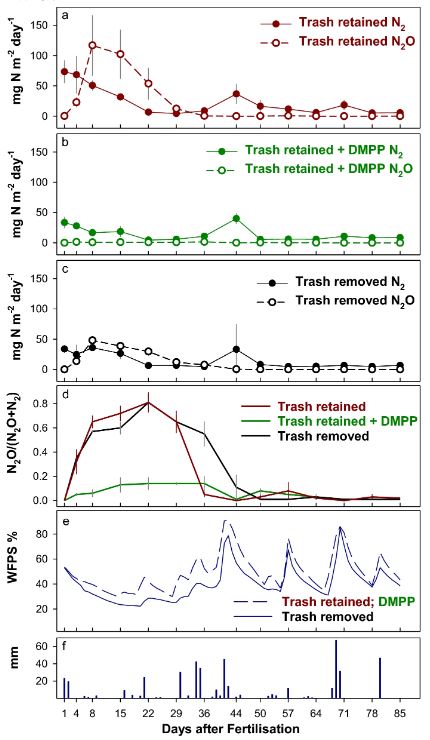February 25, 2023 | Nutrient Cycling in Agroecosystems |
Introduction: In sugarcane farming, excessive nitrogen fertilizer use, combined with warm climates and high crop residue retention, leads to significant emissions of nitrous oxide (N2O), a potent greenhouse gas. However, the overall losses of nitrogen in the form of N2 and N2O remain unclear. In Bundaberg, Australia, a research team from Queensland University of Technology examined the impact of removing sugarcane trash and using a nitrification inhibitor on N2 and N2O emissions.
Key findings: Under standard practices of retaining cane trash and applying nitrogen fertilizer, substantial emissions of N2 and N2O were observed. However, removing cane trash reduced N2 emissions by 34% and N2O emissions by 51%. The use of DMPP further decreased emissions, with a 35% reduction in N2 and a staggering 98% reduction in N2O emissions. Importantly, the use of DMPP also significantly lowered the proportion of emissions released as N2O, making it a promising strategy to minimize greenhouse gas emissions (Read more).
Figure | Average daily N2 and N2O fluxes for for the different treatments a, b and c with the corresponding product ratio N2O/(N2 + N2O) (d), soil water filled pore space (WFPS) 0-10 cm depht, (e) and daily precipitation (f).





